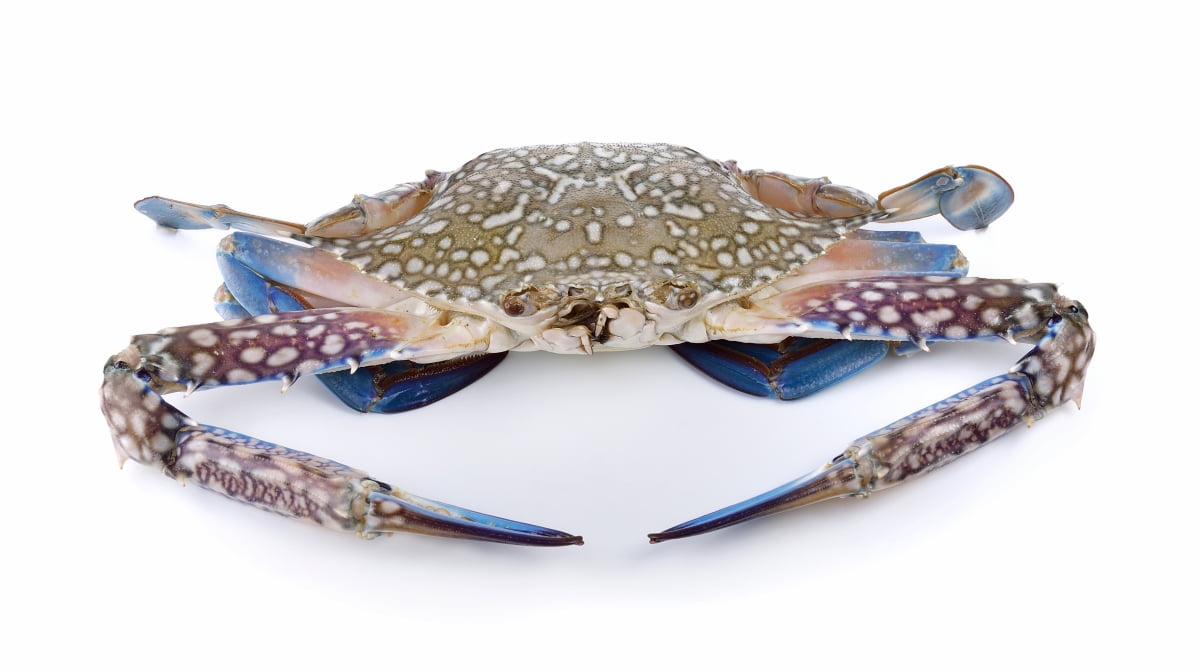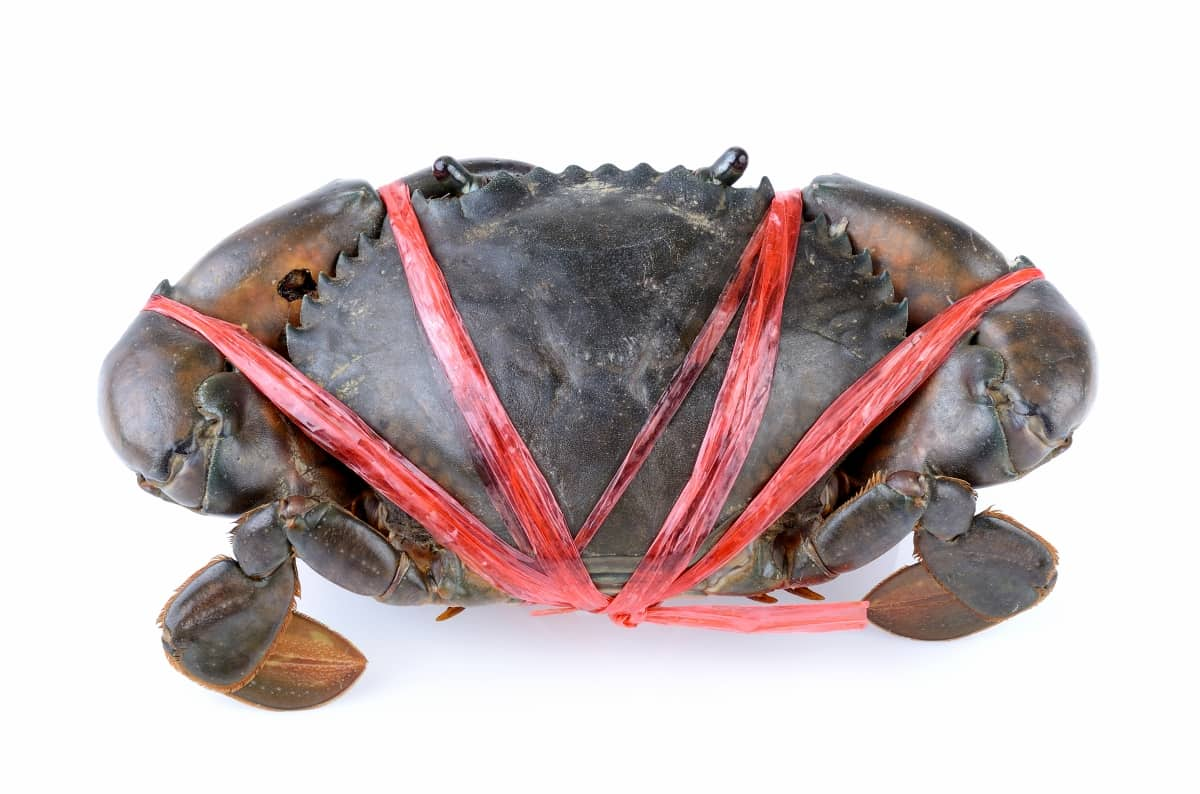The Box Culture Method is a highly efficient and controlled approach to crab rearing. In this method, individual boxes are used as enclosures, providing a confined space for the crabs to grow and thrive. These boxes are typically designed with appropriate dimensions to accommodate the specific species of crabs intended for rearing.

The method allows for better management of environmental conditions, water quality, and feeding practices. Adequate aeration and water exchange are crucial aspects, ensuring optimal growth and health of the crabs within the confined spaces. Regular monitoring of water parameters like temperature (18-30°C), salinity (25-35 ppt), and pH (7.8-8.5) is essential to maintain a favorable environment for the crabs.
Crab Rearing in Box Culture Method
Select the Ideal Location for Crab Rearing Boxes
Choosing the right location is imperative for the success of crab rearing using the Box Culture Method. Ideally, the site should be near a clean and reliable water source to facilitate regular water exchange. Maintain water quality for the well-being of the crabs. Additionally, the location should offer protection from extreme weather conditions and predators. Adequate sunlight exposure is beneficial for natural biological processes in the water and promotes the growth of essential microorganisms as a food source for crabs. Accessibility to necessary infrastructure, such as electricity for aeration systems, is also a key consideration.
Set Up the Crab Rearing Boxes
Begin by placing the boxes in a carefully chosen location, ensuring they are submerged to an appropriate depth. Secure the boxes to prevent movement and ensure stability. The boxes should be evenly spaced, allowing for proper water circulation and ease of monitoring. Install aeration systems within the boxes to maintain oxygen levels and promote a healthy growing aquatic environment. Adequate water depth and quality are crucial for the well-being of the crabs.
Water Quality Management in Crab Rearing Boxes
Managing water quality is paramount in crab rearing. Regularly monitor and adjust parameters such as temperature (18-30°C), salinity (25-35 ppt), and pH (7.8-8.5) to maintain optimal conditions. Implement efficient filtration systems to remove debris and waste, preventing water contamination.
Conduct periodic water exchanges to refresh and replenish essential nutrients. Regular testing and adjustments ensure a stable environment, reducing stress on the crabs and minimizing the risk of diseases. Water quality management is a continuous process, integral to successful crab rearing in boxes.
Feed and Nutrition for Crabs in Box Culture Method
In the Box Culture Method, provide a balanced diet to meet the nutritional diet requirements of the crabs. Offer a mix of commercial crab feeds supplemented with natural sources like algae and small aquatic organisms. Feed crabs multiple times a day, adjusting the quantity based on their growth stage.
In case you missed it: Crab Farming Success Story: Check How This Aqua Farmer Turns His Business Profitable

Ensure proper feeding practices to prevent overfeeding, which can lead to water quality issues. Monitoring the crabs’ feeding behavior and adjusting the diet accordingly is crucial. Adequate nutrition supports optimal growth, molting, and overall health in the controlled environment of the crab-rearing boxes.
Monitor and Manage Crab Health in Box Culture Method
Regularly inspect the crabs for signs of diseases, parasites, or stress indicators such as lethargy or abnormal behavior. Implement a quarantine protocol for new additions to prevent the spread of potential infections. Conduct routine health assessments by observing molting patterns, shell integrity, and overall activity levels. In case of any health issues, promptly isolate affected individuals and, if necessary, administer appropriate treatments.
Maintain optimal water quality, as poor conditions can compromise crab health. Adjust salinity, temperature, and pH levels as needed and promptly address any fluctuations. Ensure a well-balanced diet and monitor feeding behavior to identify potential issues. Regularly clean and disinfect the rearing boxes to minimize the fungal or bacterial infections. Educate staff or individuals involved in crab rearing about common health issues and proper handling techniques.
Harvest and Handle Crabs From Rearing Boxes
Use appropriate tools, such as nets or traps, to capture the crabs without causing harm. Before harvesting, temporarily reduce water levels to facilitate easier access. Handle crabs gently to avoid injuries and stress, which can impact meat quality. Sort crabs based on size and species to optimize market value.
Harvest only the mature crabs, leaving smaller ones to continue growing. If necessary, use a humane and swift method to euthanize the harvested crabs. Properly store harvested crabs in suitable containers with adequate ventilation to prevent suffocation. Maintain hygiene during the harvesting process to ensure the quality and safety of the harvested crabs. Implement efficient logistics for quick transport to market or processing facilities.
Market and Sell Crabs from Box Culture Method
Establish relationships with local seafood markets, restaurants, and wholesalers to create a reliable distribution network. Emphasize the advantages of the Box Culture Method, such as controlled environments leading to high-quality and consistent yields. Develop a brand identity highlighting the sustainable and environmentally friendly aspects of crab rearing in boxes. Utilize digital promotion channels to reach a wider audience, showcasing the cleanliness, traceability, and freshness of the crabs.
In case you missed it: A Step-By-Step Guide to Starting Your Own Crab Farm: Cultivation Process

Offer competitive pricing and consider certifications that demonstrate adherence to quality standards and ethical practices. Provide customer education on the benefits of crabs raised through the Box Culture Method, emphasizing the superior taste and safety of the product. Consider direct-to-consumer sales through farmers’ markets or an online platform, offering convenience and transparency.
Troubleshoot Common Issues in Crab Rearing Boxes
In crab-rearing boxes, several common issues may arise, necessitating prompt troubleshooting to ensure the well-being of the crabs and the success of the operation. Monitor water quality regularly and address imbalances promptly, adjusting parameters like salinity or pH as needed. Inspect aeration systems for proper functioning, as inadequate oxygen levels can be detrimental to crab health. Address any signs of disease promptly through isolation and treatment protocols.
Check for and repair any damage to the rearing boxes to prevent water leaks or structural issues. Maintain proper feeding practices, avoid overfeeding or underfeeding, and adjust the diet based on the crabs’ developmental stages. Regularly clean and disinfect the rearing boxes to prevent the buildup of harmful microorganisms. Train staff or individuals involved in crab rearing to recognize and respond to potential issues effectively.
Sustainability Practices in Crab Rearing Using Box Culture Method
Sustainability practices in crab rearing through the Box Culture Method are essential for minimizing environmental impact and ensuring long-term viability. Implementing responsible feed management helps reduce the ecological footprint, ensuring that crabs receive nutrition efficiently. Utilizing efficient water management techniques, such as recirculation systems, minimizes water consumption and discharge.
In case you missed it: How to Establish a Biofloc Fish Farm: A Comprehensive Step-By-Step Guide

Employing eco-friendly materials for constructing rearing boxes contributes to sustainability, as does optimizing energy use for aeration and water quality maintenance. Promote biodiversity in and around rearing sites, fostering a balanced ecosystem. Avoid overstocking to prevent undue stress on crabs and minimize the risk of disease outbreaks. Regular monitoring and adherence to ethical harvesting practices further contribute to the sustainability of crab rearing.
Conclusion
In conclusion, the Box Culture Method for crab rearing offers a controlled and efficient approach, ensuring optimal conditions for growth and health. Through strategic water and feed management, vigilant health monitoring, and sustainable practices, this method not only yields high-quality crabs but also promotes environmental responsibility.
- Feed Your Flock for Less: Top 10 Tips to Save on Chicken Feed
- Ultimate Guide to Ossabaw Island Hog: Breeding, Raising, Diet, and Care
- Hatching Answers: The Top 10 Reasons Your Chickens Aren’t Laying Eggs
- Eggs and Economics: Breaking Down the Cost of Raising Backyard Chickens
- Defend Your Greens: Proven Methods to Keep Iguanas Out of Your Garden
- Ultimate Guide to Cinnamon Queen Chicken: A Comprehensive Guide for Beginners
- Ultimate Guide to California Tan Chicken: Breeding, Raising, Diet, Egg-Production and Care
- Ultimate Guide to Marsh Daisy Chicken: Breeding, Raising, Diet, and Care
- 10 Types of Chicken Farming Businesses You Can Start for Profits